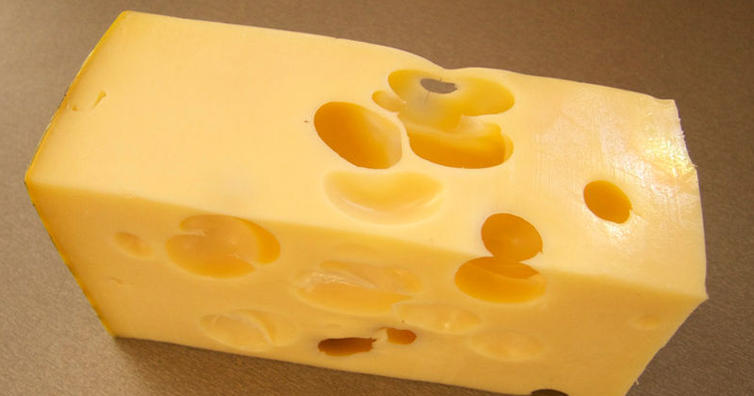I don’t know about you but i’ve always wondered how does Swiss cheese get its holes. Do they serve any purpose or is it just there due to the manufacturing process?
Well, let’s look at the facts.
According to cheese expert Liz Thorpe, who is the author of the very interesting book The Cheese Chronicles (Get it from Amazon![]() ) and vice president of New York’s Murray’s Cheese Shop, Swiss cheese gets its holes from the aging process. Here’s how this works. (the article continues after the ad)
) and vice president of New York’s Murray’s Cheese Shop, Swiss cheese gets its holes from the aging process. Here’s how this works. (the article continues after the ad)
As the cheese ripens, the bacteria that are inside it, break down the protein. This process ultimately stretches the cheese, creating bubbles that when break, give it its distinctive holes. This is the reason why the number and size of the holes has to do with the number of bacteria in the cheese, how active they are, and of course, the temperature of the room the cheese has been placed to aged in. This certain type of bacteria is unique to Swiss cheeses and that is the reason why only Swiss cheese has holes in it.
Interestingly, an alternative research made by a Swiss laboratory suggested that for the holes we should blame not the bacteria, but flecks of hay. According to the research, fewer holes have been appearing over the last 15 years as modern milking methods have made it more difficult for hay to fall into the milk containers. However this research has not been peer reviewed yet and its not widely embraced by the scientific community.
If you like what you read, then you will definitely love this one: This Is The Difference Between ‘White’ And ‘Yellow’ Cheddar
Photo: Wikimedia
Photoshop: I’m A Useless Info Junkie
Sources: The Cheese Expert | Why Does Swiss Cheese Have Holes? | Swiss cheese hole mystery solved: It’s all down to dirt



